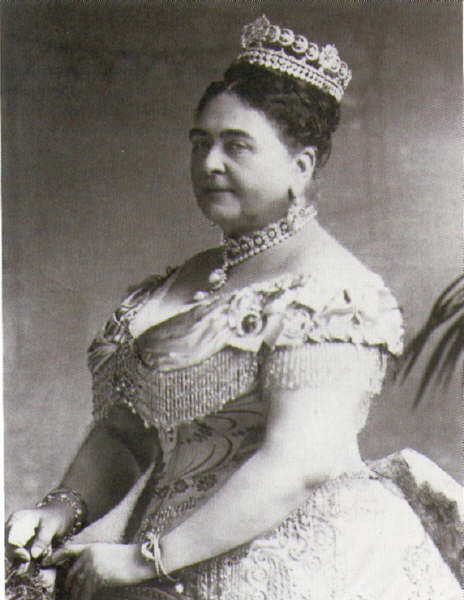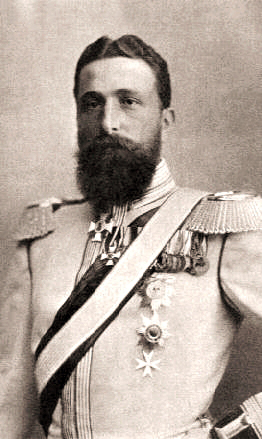© Unofficial Royalty 2024

King Alexander I of Greece, Credit – Wikipedia
October 25, 1047 – Death of Magnus the Good, King of Denmark and Norway, in Denmark; buried at Nidaros Cathedral in Trondheim, Norway
The exact cause of Magnus’ death is unknown but there were reports that Magnus fell overboard from a ship and drowned, that he fell off his horse, and that he fell ill while on board a ship.
Unofficial Royalty: Magnus the Good, King of Denmark and Norway
October 25, 1154 – Death of King Stephen of England at Dover Castle in Kent, England; buried at Faversham Abbey in Kent, England; Henry FitzEmpress ascends to the throne as King Henry II, the first of the Angevin Kings of England
King Stephen was born Stephen of Blois, the son of Stephen II, Count of Blois and Adela of Normandy and England, a daughter of King William I of England (the Conqueror). After his uncle King Henry I of England died, Stephen seized power. Stephen and his first cousin Matilda, the only surviving legitimate child of King Henry I of England, fought a long civil war known as The Anarchy between 1135 and 1153. In 1153, a treaty was signed that allowed Stephen to keep the English throne until his death but forced him to recognize Matilda’s son Henry FitzEmpress, as his heir. Stephen died the following year of appendicitis. Matilda’s son began his reign as King Henry II of England, the start of a line of fourteen Plantagenet kings who ruled until 1485.
Unofficial Royalty: King Stephen of England
October 25, 1692 – Birth of Elisabeth Farnese of Parma, Queen of Spain, second wife of King Felipe V of Spain, at Palazzo della Pilotta in Parma, Italy
After the death of his first wife, Felipe V of Spain married Elisabeth Farnese in 1714. Elisabeth and Felipe V had six children. Felipe V experienced episodes of manic depression. During several periods, he was unable to handle government affairs and Elisabeth became the de facto ruler. As he grew older, Felipe V’s mental issues worsened and Elisabeth became the permanent de facto ruler of Spain. In 1746, Felipe V had a stroke and died a few hours later. Elisabeth’s stepson Fernando VI, King of Spain reigned for thirteen years. Fernando’s marriage was childless so when he died in 1759, Elisabeth’s elder surviving son succeeded his half-brother as King Carlos III of Spain. On July 11, 1766, aged 73, Elisabeth died at the Royal Palace of Aranjuez in Aranjuez, Spain.
Unofficial Royalty: Elizabeth Farnese of Parma, Queen of Spain
October 25, 1743 – Birth of Friedrich Karl August, Prince of Waldeck and Pyrmont in Zweibrücken, County Palatinate-Zweibrücken, now in Rhineland-Palatinate, Germany
In 1763, Friedrich Karl August’s father died and he succeeded him as reigning Prince of Waldeck-Pyrmont. However, his mother Christiane Henriette served as Regent of the Principality of Waldeck-Pyrmont until 1766. After a visit to England in 1775 to learn about ways to modernize Waldeck-Pyrmont, Friedrich Karl August instituted plans for road construction, improvements to agriculture, production of wool and linen, and the mining of iron. The education system was improved and a gymnasium, the term for a German secondary school was constructed in Korbach. Friedrich Karl August died at age 68 and because he was unmarried, his brother Georg succeeded him.
Unofficial Royalty: Friedrich Karl August, Prince of Waldeck and Pyrmont
October 25, 1759 – Birth of Sophie Dorothea of Württemberg, Empress Maria Feodorovna, Empress of All Russia, second wife of Paul I, Emperor of All Russia, in Stettin, Kingdom of Prussia, now in Poland
Full name: Sophia Marie Dorothea Auguste Luise
In 1776, less than six months after the death of Paul’s first wife and child in childbirth, 17-year-old Maria Feodorovna and 22-year-old Paul Petrovich were married. The couple had a happy marriage for many years. Maria Feodorovna and Paul had ten children including two Emperors of All Russia. Maria Feodorovna promoted the arts, painted watercolors, designed cameos, and created ivory artworks. She was a gifted musician, played the harpsichord, and arranged for plays to be performed at her court. Maria and Paul were particularly interested in German and French literature and created an extensive library of German works at Gatchina Palace where writers, artists, and scholars frequently gathered.
Unofficial Royalty: Sophie Dorothea of Württemberg, Maria Feodorovna, Empress of All Russia
October 25, 1760 – Death of King George II of Great Britain at Kensington Palace in London, England; buried at Westminster Abbey in London, England
On October 25, 1760, King George II woke up early at Kensington Palace and had his usual cup of chocolate. He asked about the direction of the wind as he was anxious about receiving his overseas mail, and then he entered his water closet. A few minutes later, his valet heard a crash and found George lying on the floor. He was put into bed and asked for his favorite daughter Princess Amelia, but he died before the princess reached him. An autopsy showed that he died of a ruptured aortic aneurysm. King George II was buried in Westminster Abbey, the last monarch to be buried there. He was succeeded by his grandson, King George III.
Unofficial Royalty: King George II of Great Britain
October 25, 1874 – Birth of Bertha Louise of Hesse-Philippsthal-Barchfeld, Princess of Lippe, the first of the two wives of Leopold IV, the last Prince of Lippe, in Burgsteinfurt, a city under the control of the noble Bentheim-Steinfurt family, now in the German state of North Rhine-Westphalia
In 1901, Bertha Louise married the future Leopold IV, Prince of Lippe. The couple had five children. Alexander, Prince of Lippe, the last of the Lippe-Detmold line, died in 1905. With the extinction of the Lippe-Detmold line, the throne of the Principality of Lippe went to Bertha Louise’s husband who reigned as Leopold IV and would be the last reigning Prince of Lippe. Following the German Empire’s defeat in World War I and the German Revolution of 1918-1919, Leopold IV was forced to renounce the throne. However, Leopold negotiated a treaty with the new government that allowed his family to remain in Lippe. During the rise of Nazism in Germany, all three sons of Bertha Louise and Leopold became members of the Nazi Party. At the end of World War II, Hereditary Prince Ernst was taken prisoner by the Allies and took part in the Nuremberg Trials as a witness. The denazification tribunal in the Detmold administrative district classified Ernst as a Lesser Offender, Category III. He was not imprisoned but rather placed on probation for two-three years with a list of restrictions.
Unofficial Royalty: Bertha Louise of Hesse-Philippsthal-Barchfeld, Princess of Lippe
October 25, 1876 – Birth of Princess Shivakiar, first wife of King Fuad I of Egypt, in Üsküdar, Istanbul in the Ottoman Empire, now in Turkey
Unofficial Royalty: Princess Shivakiar Ibramin, first wife of King Fuad I of Egypt
October 25, 1920 – Death of King Alexander of Greece from blood poisoning caused by a monkey bite, at the Royal Palace in Athens, Greece; buried at the Royal Cemetery at Tatoi Palace in Greece
On October 2, 1920, King Alexander was bitten by a monkey while walking on the grounds of Tatoi Palace. Not thinking it was serious, he had the wound cleaned and dressed, but it soon became infected. He soon developed septicemia and became delirious with fever. Despite his pleas for his mother to be at his bedside, the government would not allow either of his parents to return to Greece. They did allow his grandmother Queen Olga to come to Athens. King Alexander died on October 25, 1920, at the Royal Palace. Delayed by bad weather, Queen Olga did not arrive until two hours after his death.
Unofficial Royalty: King Alexander of Greece
October 25, 1921 – Birth of King Mihai (Michael) of Romania in a chalet on the grounds of Peleş Castle in Sinaia, Romania
Mihai was the only child of King Carol II of Romania and his second wife, Princess Helen of Greece. He was the last King of Romania, reigning from 1927 to 1930 and again from 1940 until his forced abdication in 1947. In 1947, Mihai married Princess Anne of Bourbon-Parma. The couple had five daughters. Their eldest daughter Margareta is the current Custodian of the Crown of Romania. Mihai was banned from Romania for 43 years. In 1997, the Romanian government restored Mihai’s citizenship and in the following years, several properties were returned to the royal family.
Unofficial Royalty: King Michael of Romania
October 25, 1942 – Birth of Archduke Leopold Franz of Austria at Leutstetten Castle, near Starnberg, Bavaria, Germany
Archduke Leopold Franz of Austria was the Pretender to the former Grand Ducal throne of Tuscany from 1984 until he renounced his rights in favor of his son in 1993.
Unofficial Royalty: Archduke Leopold Franz of Austria
October 25, 1951 – Death of Amélie of Orléans, Queen of Portugal, wife of King Carlos I of Portugal, at Château de Bellevue, Le Chesnay, France; buried at the Monastery of São Vicente de Fora in Lisbon, Portugal
In 1886, Amélie married the future King Carlos I of Portugal. They had three children including King Manuel II, the last King of Portugal. As Queen, Amélie took great interest in the well-being of the Portuguese people, establishing hospitals, sanatoriums, pharmacies, kitchens, and nurseries. On February 1, 1908, King Carlos I was shot and killed by two gunmen while riding in an open carriage in Lisbon, Portugal. The king’s elder son and heir, Luís Filipe, Prince Royal, was also killed in the attack. The younger son Manuel was injured. Remarkably, Queen Amélie was unharmed and is credited with likely having saved the life of her younger son. In October 1910, the monarchy was deposed during the Republican Revolution. Amélie went into exile with her son Manuel, and mother-in-law, settling in Twickenham, London. In 1912, Amélie moved to the Château de Bellevue, Le Chesnay, France where she died in 1951 at the age of 86.
Unofficial Royalty: Amélie of Orléans, Queen of Portugal
October 25, 1980 – Death of Philipp, Landgrave of Hesse, Head of the Electoral House of Hesse-Kassel and Head of Grand Ducal House of Hesse and by Rhine, in Rome, Italy; buried in the family cemetery at the former Schloss Friedrichshof (now Schlosshotel Kronberg) in Kronberg im Taunus, in the German state of Hesse
Philipp became head of the Electoral House of Hesse (also known as Hesse-Kassel) in 1940. In 1968, upon the death of his childless distant cousin, Prince Ludwig of Hesse and by Rhine, Philipp inherited the headship of the former Grand Ducal House of Hesse and by Rhine as well. This reunited the last two remaining branches of the historic House of Hesse, which had been divided in 1567.
Unofficial Royalty: Philipp, Landgrave of Hesse
October 25, 2001 – Birth of Princess Elisabeth of Belgium, Duchess of Brabant, daughter and heir apparent of Philippe, King of the Belgians, at Hôpital Erasme in Anderlecht, Brussels, Belgium
Full name: Elisabeth Thérèse Marie Hélène
Belgium changed its succession law in 1991 to absolute primogeniture where the succession passes to the eldest child of the sovereign regardless of gender. Males and females have equal succession rights. This means that Elisabeth is the heir apparent and comes first in the line of succession as the eldest child. She is expected to become the first Belgian Queen Regnant. Elisabeth automatically became Duchess of Brabant, the title used by the female heirs to the Belgian throne and the wives of male heirs.
Unofficial Royalty: Princess Elisabeth, Duchess of Brabant
This article is the intellectual property of Unofficial Royalty and is NOT TO BE COPIED, EDITED, OR POSTED IN ANY FORM ON ANOTHER WEBSITE under any circumstances. It is permissible to use a link that directs to Unofficial Royalty.
























